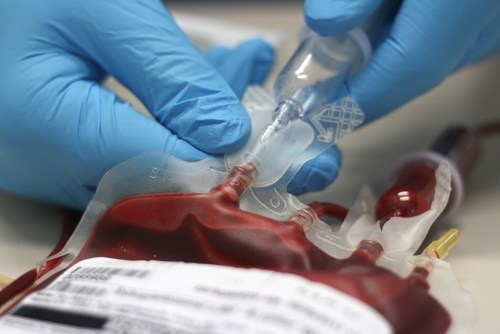Experts delineate the current trends and future perspectives in this evolving therapeutic field, underscoring its importance in treating hematological cancers
BEIJING, Nov. 3, 2022 /PRNewswire/ — Allogeneic hematopoietic stem cell transplantation (allo-HSCT) is a revolutionary therapy and currently the only curative option for hematological cancers and some immune or metabolic disorders.
Since the first successful allo-HSCT in China in 1981, the country has made tremendous contributions to this therapeutic field. In a recent paper published in the Chinese Medical Journal, clinicians summarized the current status and trends of allo-HSCT in China and discussed the future of this field. Their paper was made available online on July 22, 2022, and was published in Volume 135 Issue 12 of the journal. “Initially, China’s progress in allo-HSCT development was lagging behind, but we have made massive inroads since. Today, over 10,000 allo-HSCTs are performed in China annually,” commented Xiaoqi Wang, who was the primary contributor to this review along with her colleague Ruihao Huang. “Our goal was to not only acknowledge these great contributions but also inspire additional improvements in this field,” Huang added.
A barrier to the widespread adoption of allo-HSCT is the lack of human leukocyte antigen (HLA)-matched donors. Perhaps one of China’s greatest contributions to this field has been in addressing this problem. The Beijing Protocol provided a framework for “haploid HSCT (haplo-HSCT)” technology, which uses stem cells obtained from half-matched donors. As most family members can act as half-matched donors, this considerably increases the donor pool.
The Beijing Protocol has promoted the development of strategies for controlling complications, relapse, and infection following haplo-HSCT, achieving a similar efficacy as traditional HLA-matched allo-HSCT. Thus, haplo-HSCT has now become the primary choice for allo-HSCT in China. Collaborative efforts across research centers in China—notably Soochow, Zhejiang, Fujian, Chongqing, and Anhui—have enabled the development of new haplo-HSCT technologies, providing an additional impetus to its adoption at a global scale.
In the past 5 years, China has contributed to 13% of the world’s peer-reviewed publications on allo-HSCT, cementing its position as a global leader in the field. Chinese experts have helped in making HSCT simpler, more tunable, and effective. Additional efforts towards the widespread dissemination of HSCT technologies and clinical trials that combine newer therapies with haplo-HSCT could help in further meeting patients’ needs. According to group leaders Prof. Xiaohui Zhang and Prof. Xi Zhang, the future of HSCT should focus not only on improving patient survival but also promoting their physical and mental health. With the bursting potential of its research endeavors, China finds itself in a unique position to meet these needs.
Reference
DOI: https://doi.org/10.1097/CM9.0000000000002235
Title of original paper: Current status and prospects of hematopoietic stem cell
transplantation in China
Journal: Chinese Medical Journal
Contact:
Peifang Wei
86-10-51322170
347960@email4pr.com
SOURCE Chinese Medical Journal


